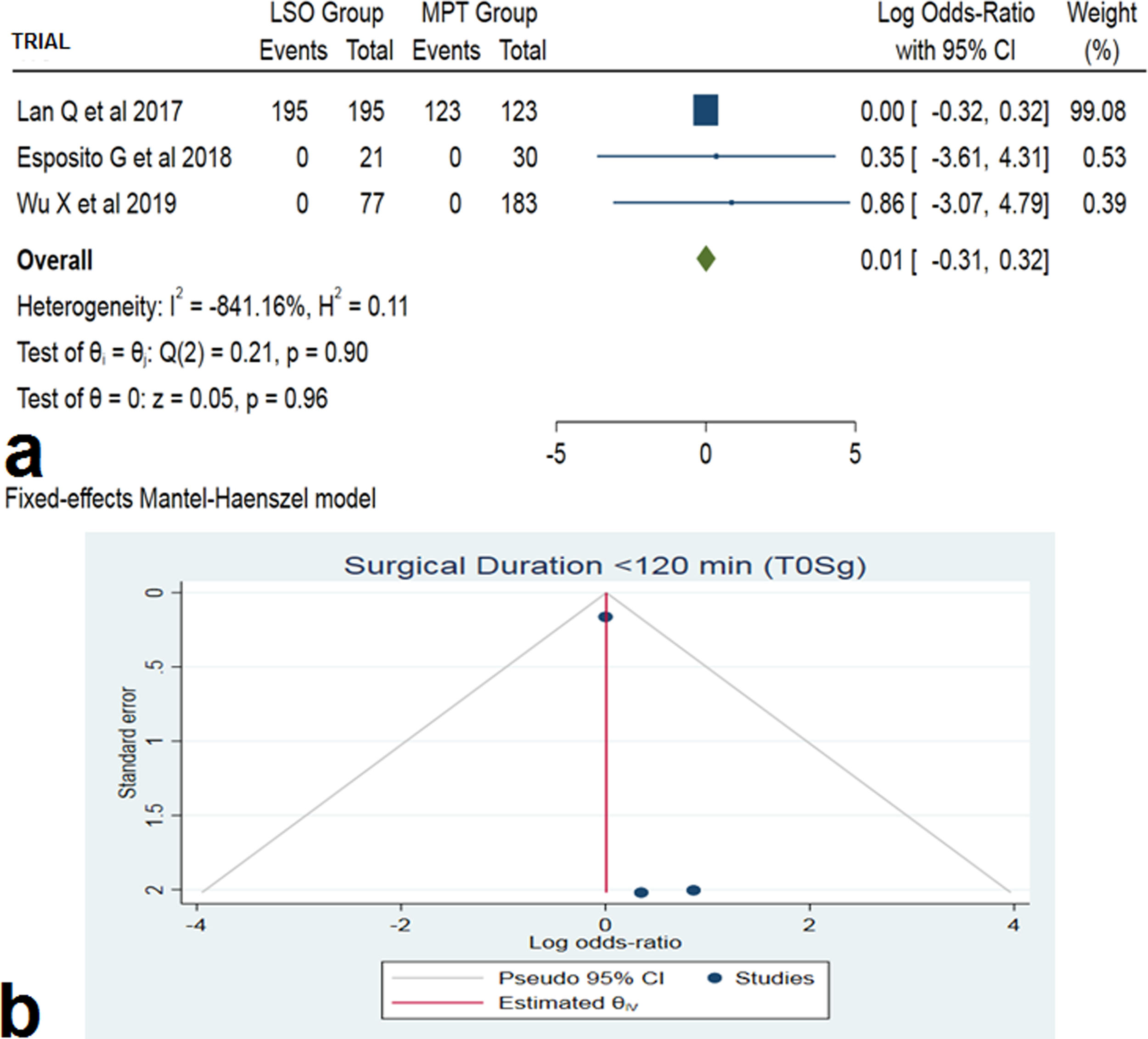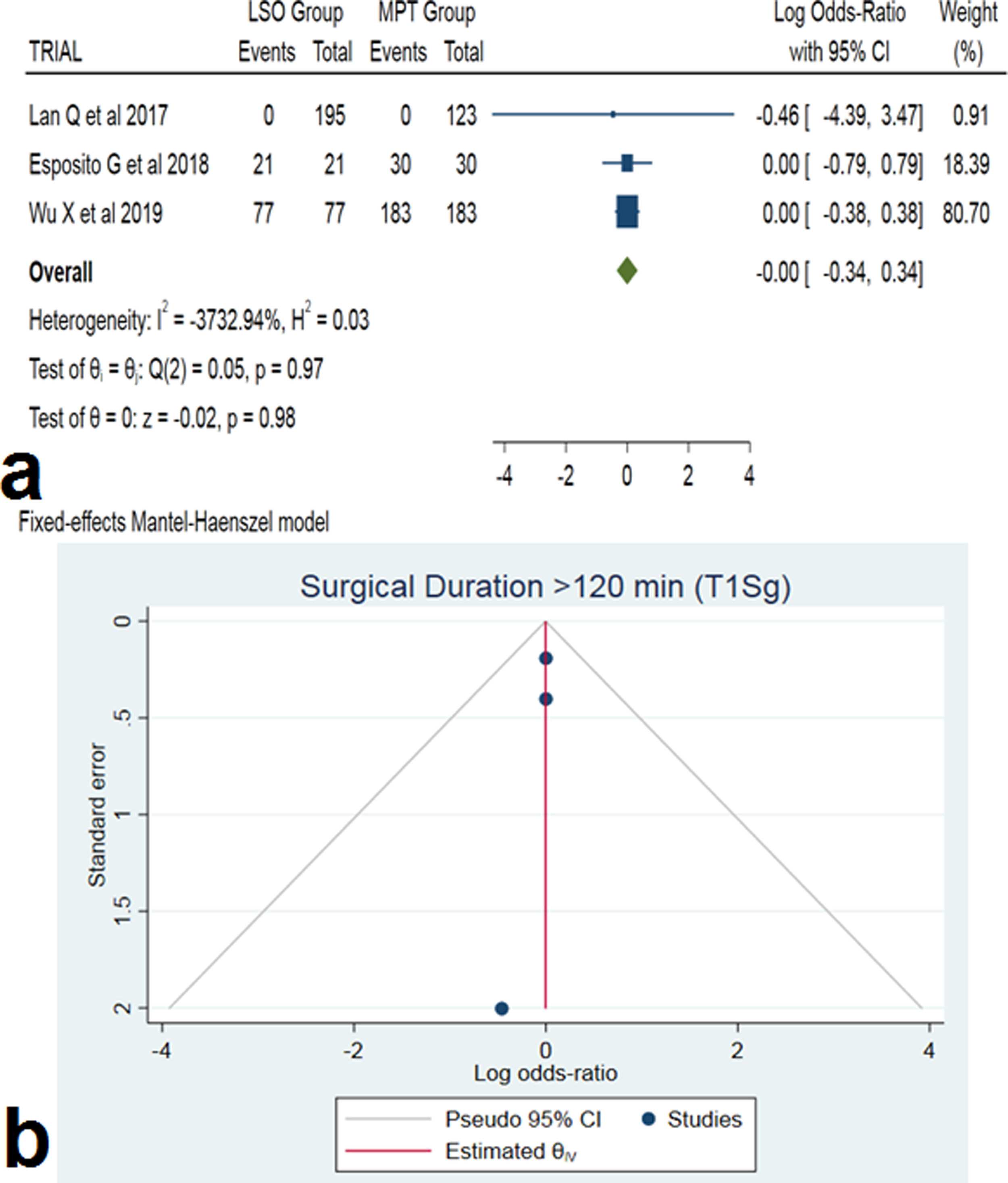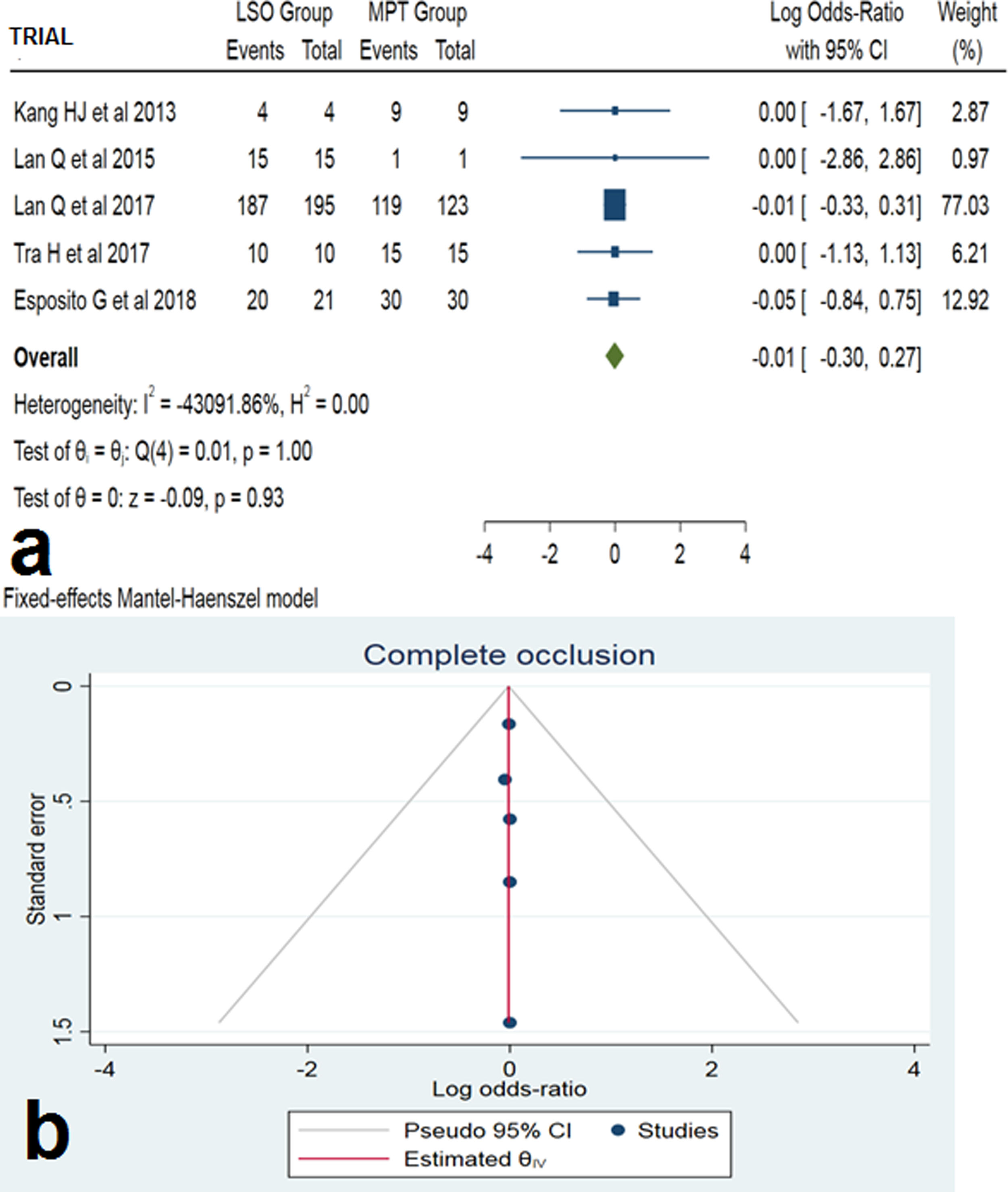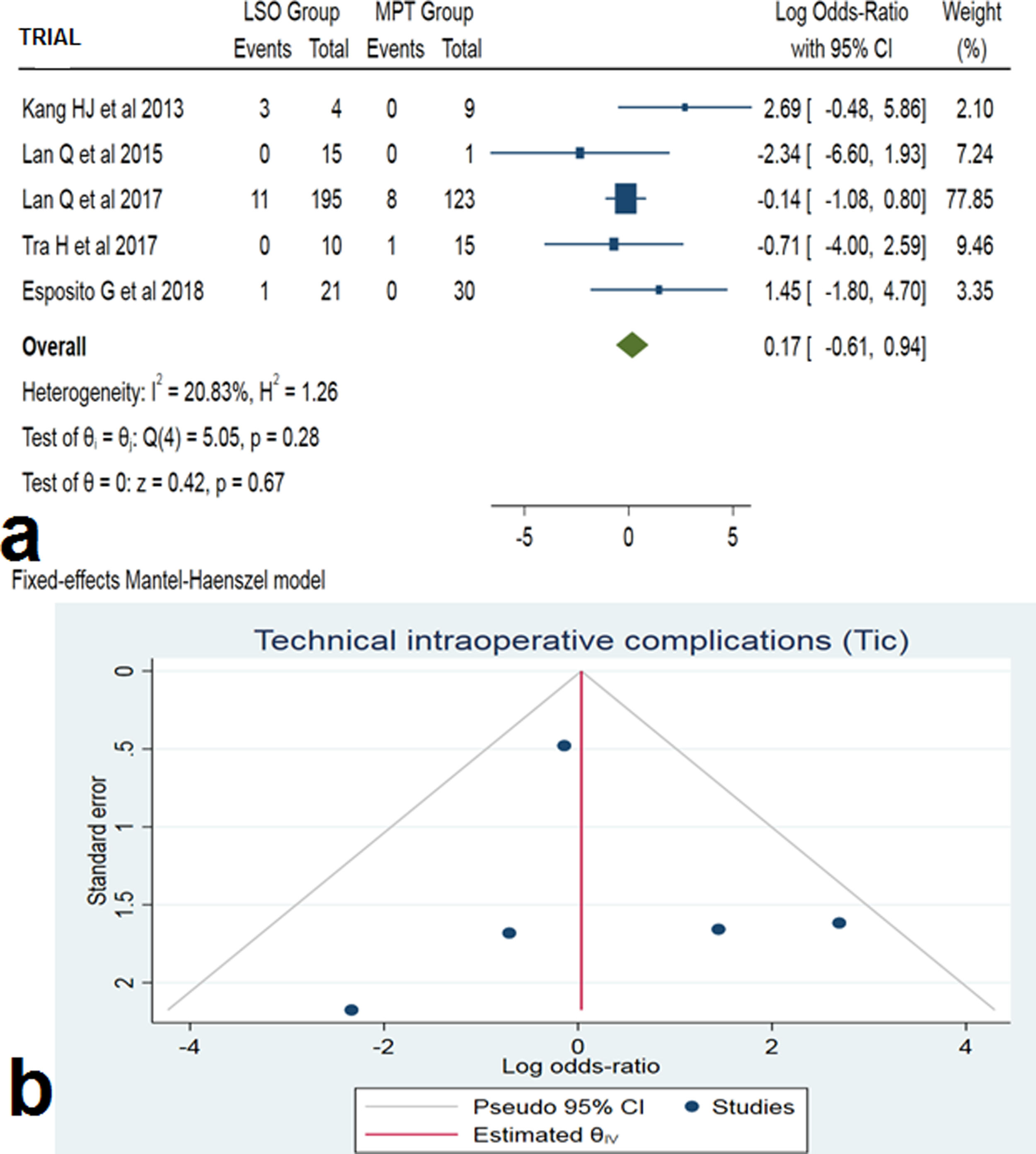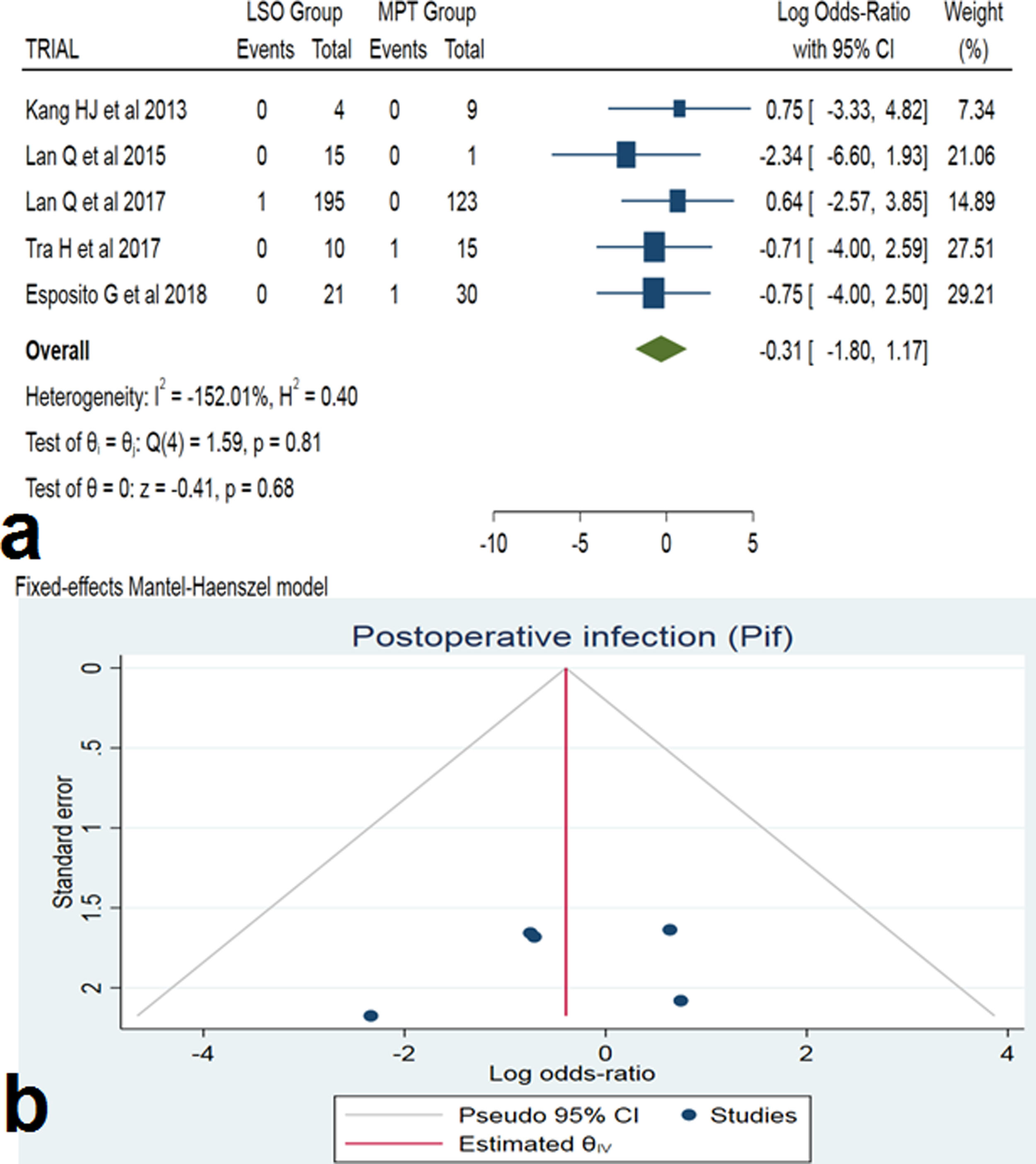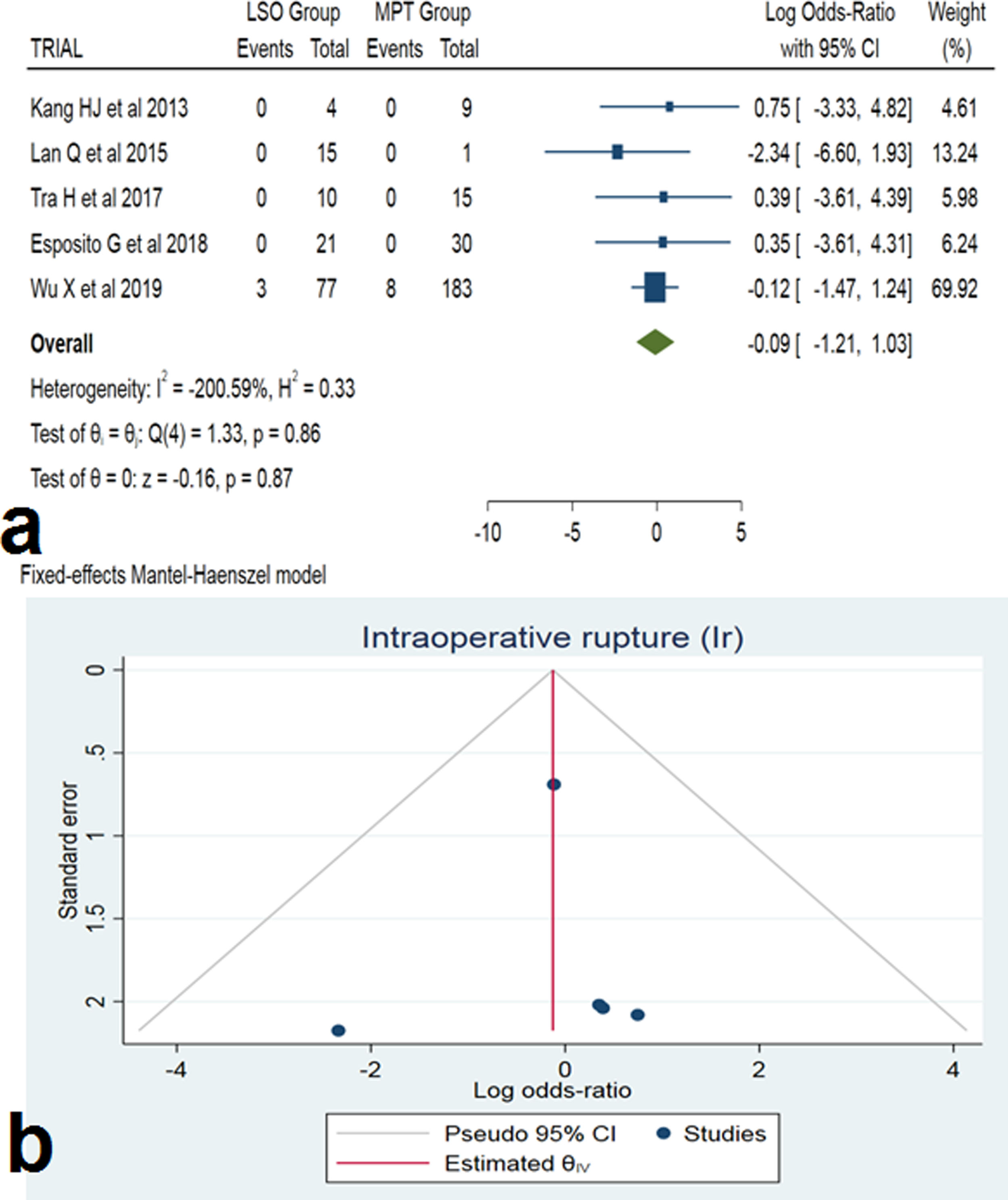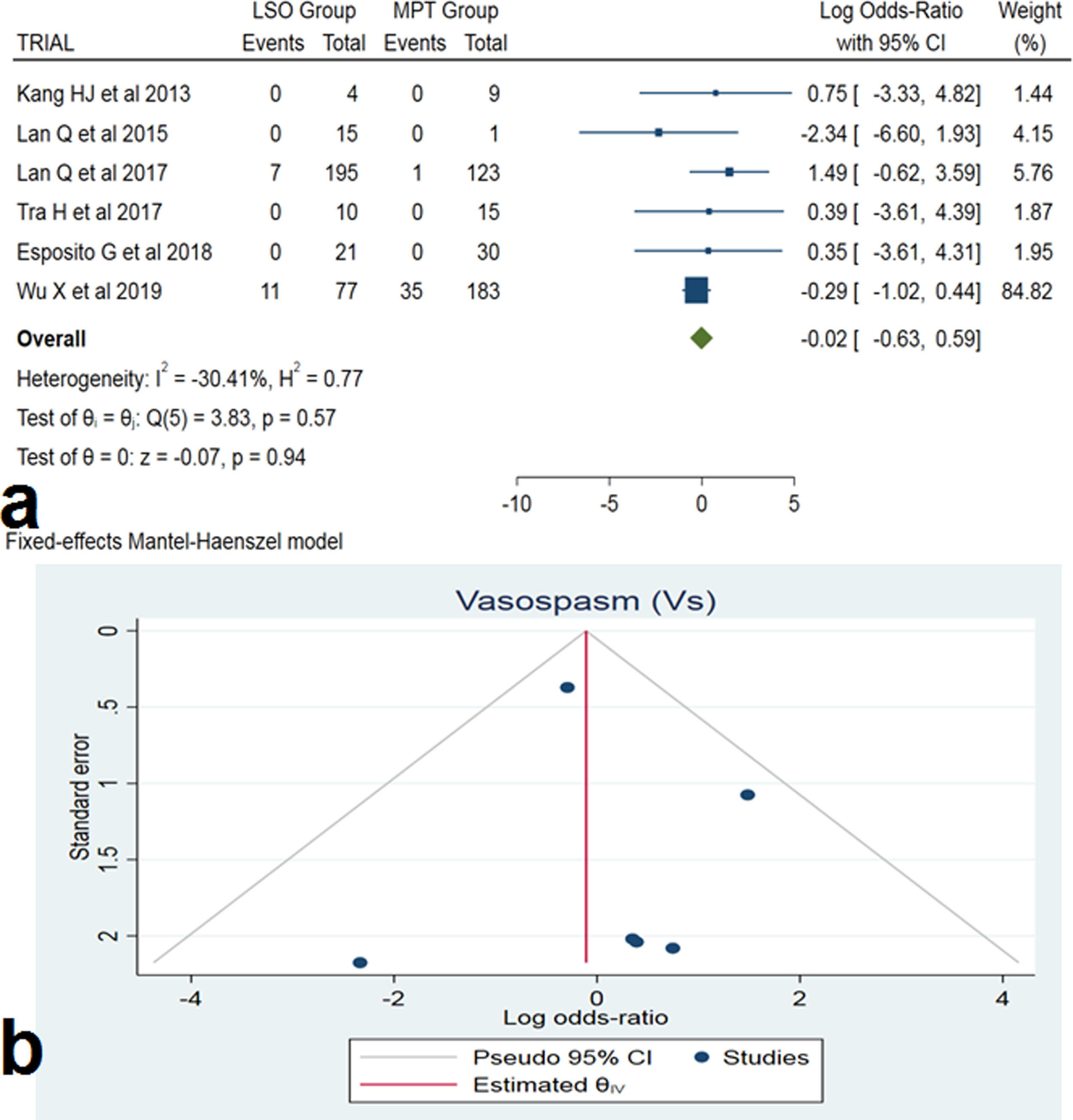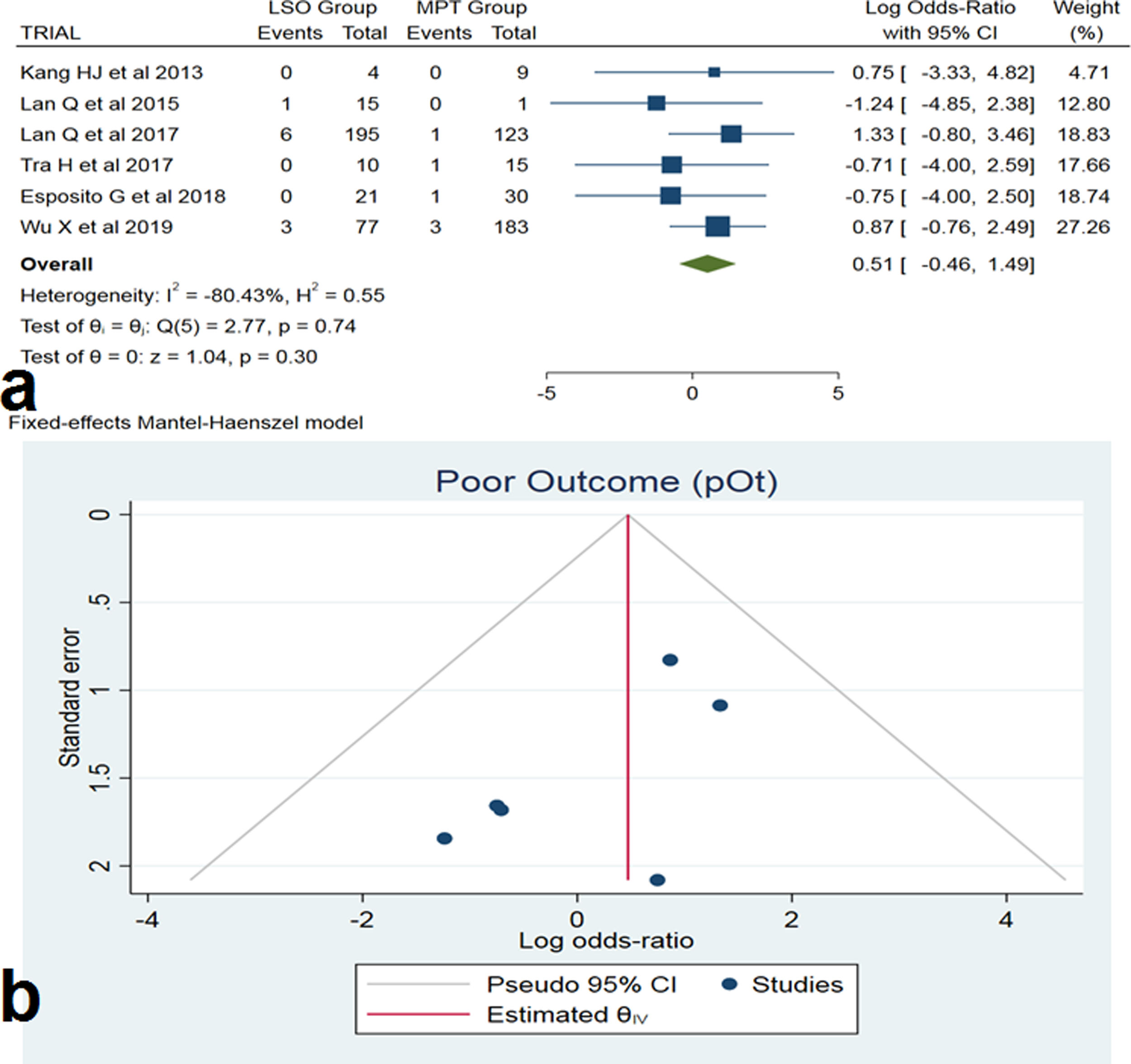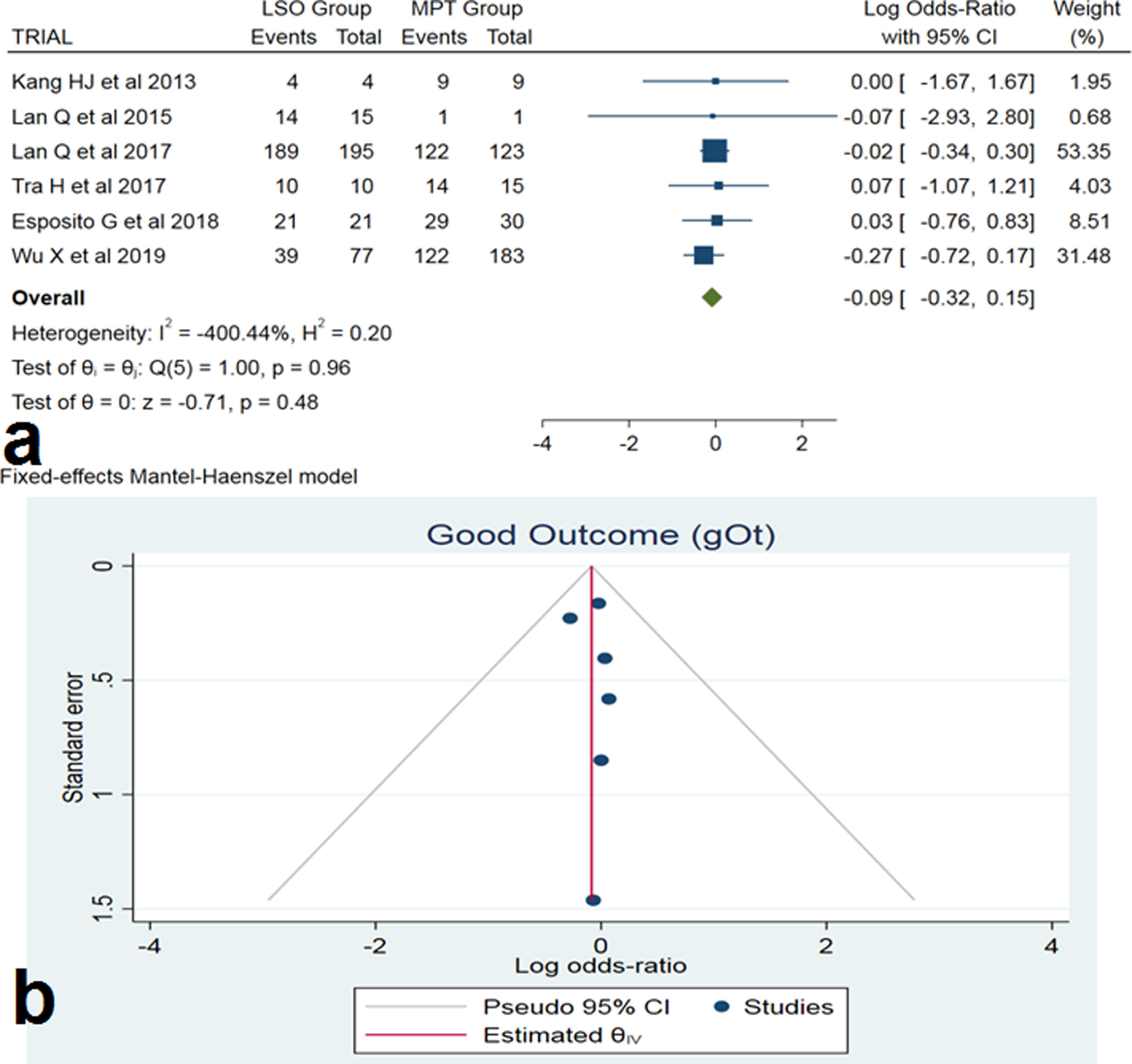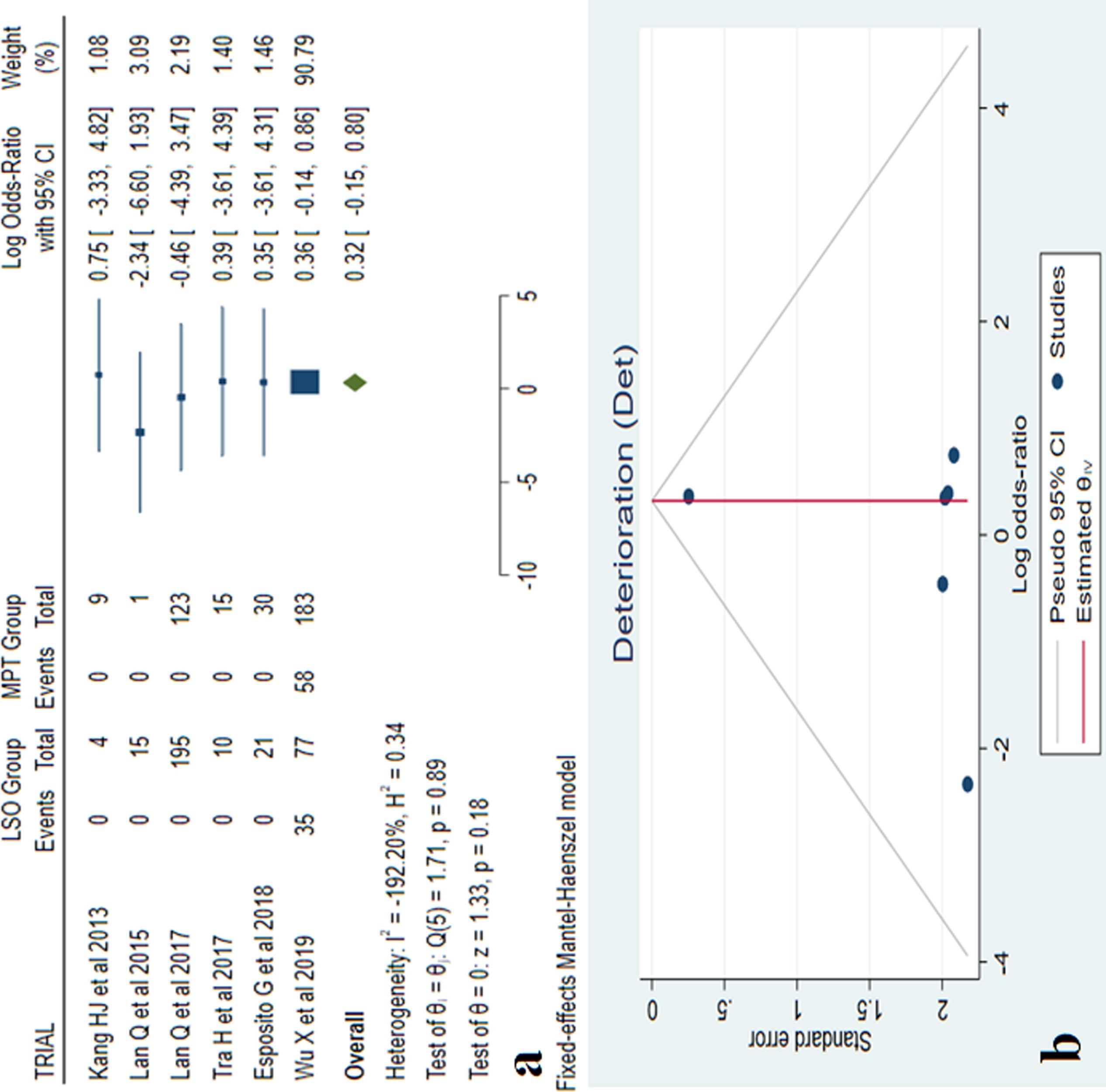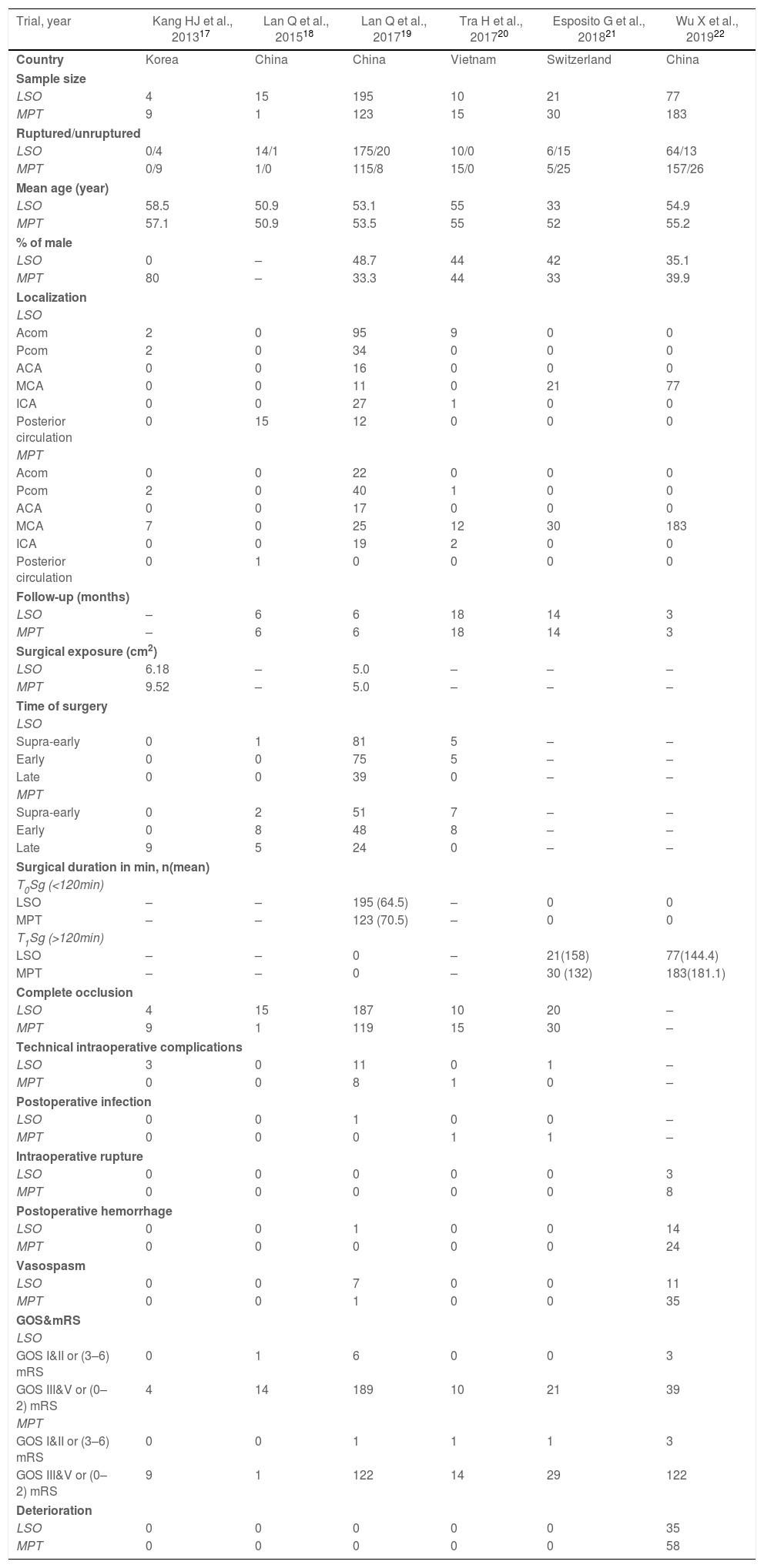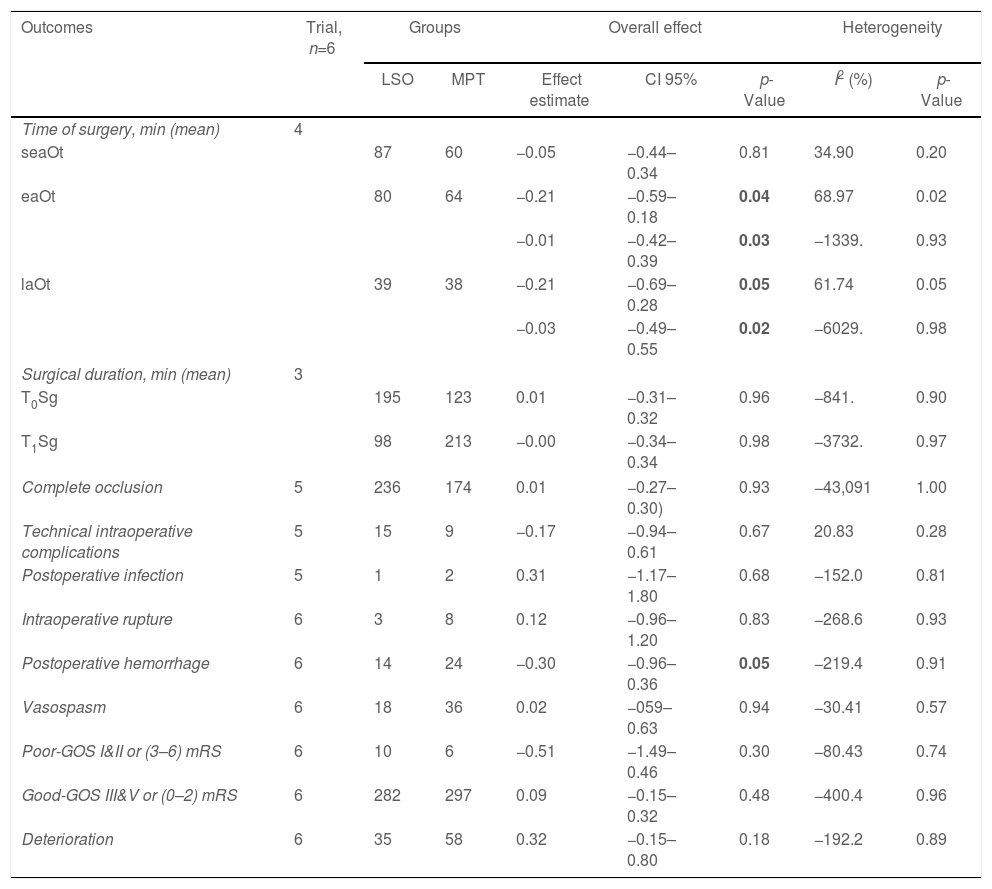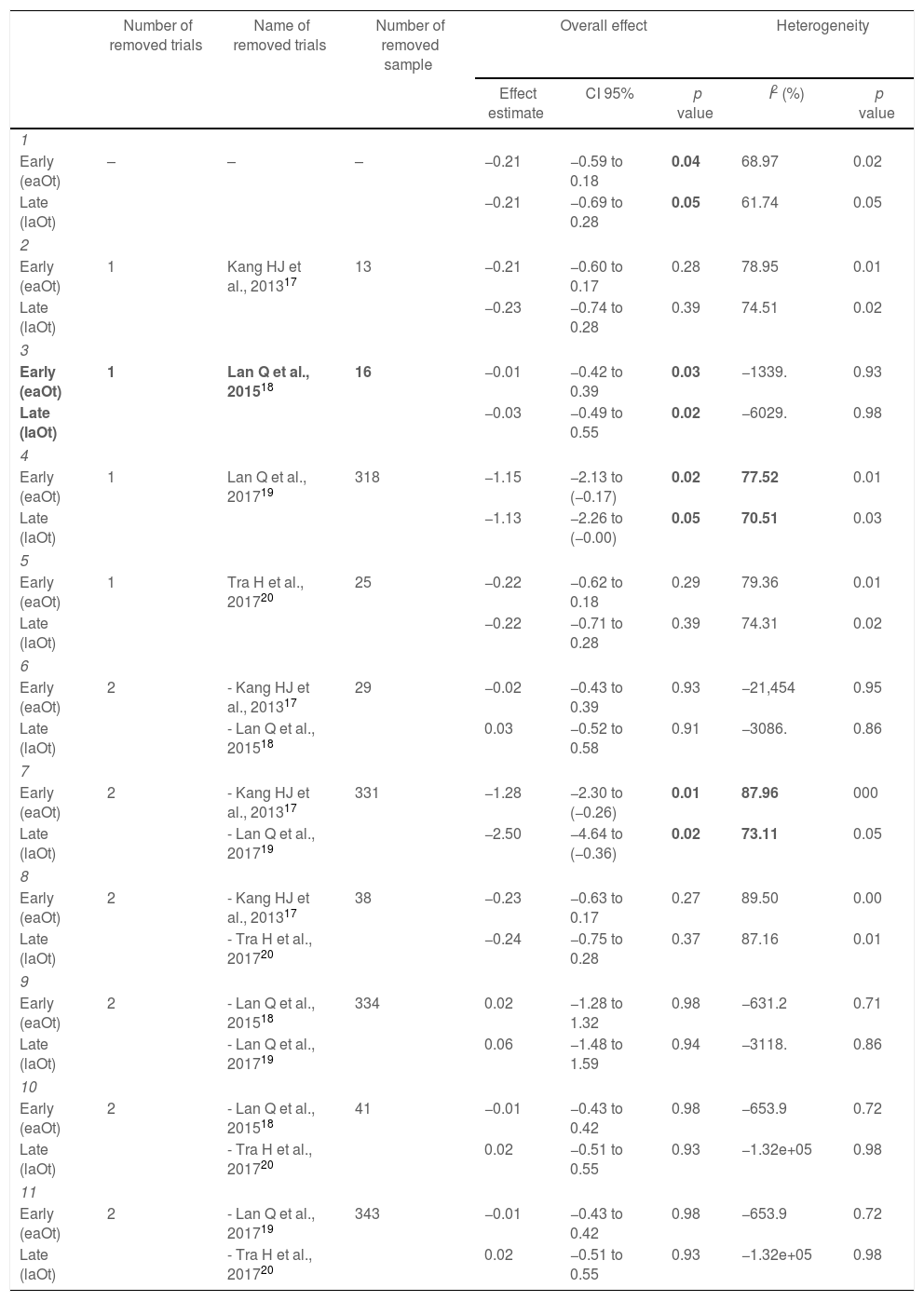To determine the characteristics and to compare the functional outcomes and safety of different subfrontal approaches versus mini Pterional (MPT) approaches mainly for the treatment of ruptured noncomplex intracranial aneurysms. This meta-analysis included articles comparing outcomes of brain aneurysms (BAs) – most for the anterior circulation–, using Lateral supraorbital & Supraorbital keyhole (LSO) versus MPT approach. There were six articles left into the final article pool and the total number of patients was 683 (322 in LSO and 361 in the MPT group). In terms of the early and late time of surgery, the LSO seems to be superior over the MPT approach but with heterogeneity (OR −0.21, CI 95% −0.59 to 0.18, and p=0.04) or (OR −0.21, CI 95% −0.69 to 0.28, and p=0.05), and (p=0.02 and I2=68.97%) or (p=0.05 and I2=61.74%) respectively. Regarding the subgroup of patients with the supra-early time of surgery, surgical duration, completed occlusion, technical intraoperative complications, postoperative infection, intraoperative rupture, vasospasm, good and poor neurological outcomes and clinical deterioration, there was no superiority of the one method over the other. Mini or keyhole craniotomy even challenging might be a good option for neurosurgeons. Particularly in ruptured noncomplex aneurysms’ surgery LSO seems to be superior over the MPT approach in terms of the early time and in the late time of surgery but with heterogeneity.
Determinar las características, comparar los resultados funcionales y la seguridad de los diferentes abordajes subfrontales vs. los abordajes minipterionales (MPT) en el tratamiento principalmente de aneurismas intracraneales rotos. Este metaanálisis incluye artículos que comparan los resultados quirúrgicos de los aneurismas cerebrales (mayoría de circulación anterior), utilizando un abordaje supraorbitario o supraorbitario lateral (LSO) frente un abordaje MPT. En el análisis quedaron seis artículos con un número total de pacientes de 683 (322 en el grupo LSO y 361 en el MPT). En cuanto al tiempo de cirugía precoz y tardío de la cirugía, el LSO parece ser superior al abordaje MPT pero con heterogeneidad (OR -0.21, IC 95% -0.59 - 0.18, y p = 0,04) o (OR -0,21, IC 95% -0,69 - 0,28, y p = 0,05), y (p = 0,02 e 12 = 68,97%) o (p = 0,05 e 12 = 61,74%), respectivamente. En cuanto al subgrupo de pacientes con tiempo de cirugía supraprecoz, la duración quirúrgica, la oclusión completa, las complicaciones técnicas intraoperatorias, la infección postoperatoria, la rotura intraoperatoria, el vasoespasmo, los resultados neurológicos y el deterioro, no hubo diferencias en superioridad de un método sobre el otro. Los resultados muestran que tanto la craneotomía MPT como el LSO, podrían ser una buena opción. Particularmente en la cirugía de aneurismas rotos no complejos el abordaje LSO parece ser superior al abordaje MPT en términos del momento inicial y tardío de la cirugía, aunque existe una heterogeneidad en los resultados.
Article

If it is the first time you have accessed you can obtain your credentials by contacting Elsevier Spain in suscripciones@elsevier.com or by calling our Customer Service at902 88 87 40 if you are calling from Spain or at +34 932 418 800 (from 9 to 18h., GMT + 1) if you are calling outside of Spain.
If you already have your login data, please click here .
If you have forgotten your password you can you can recover it by clicking here and selecting the option ¿I have forgotten my password¿.






